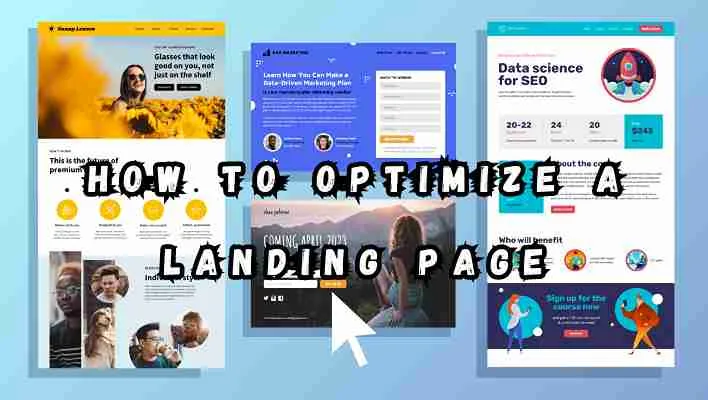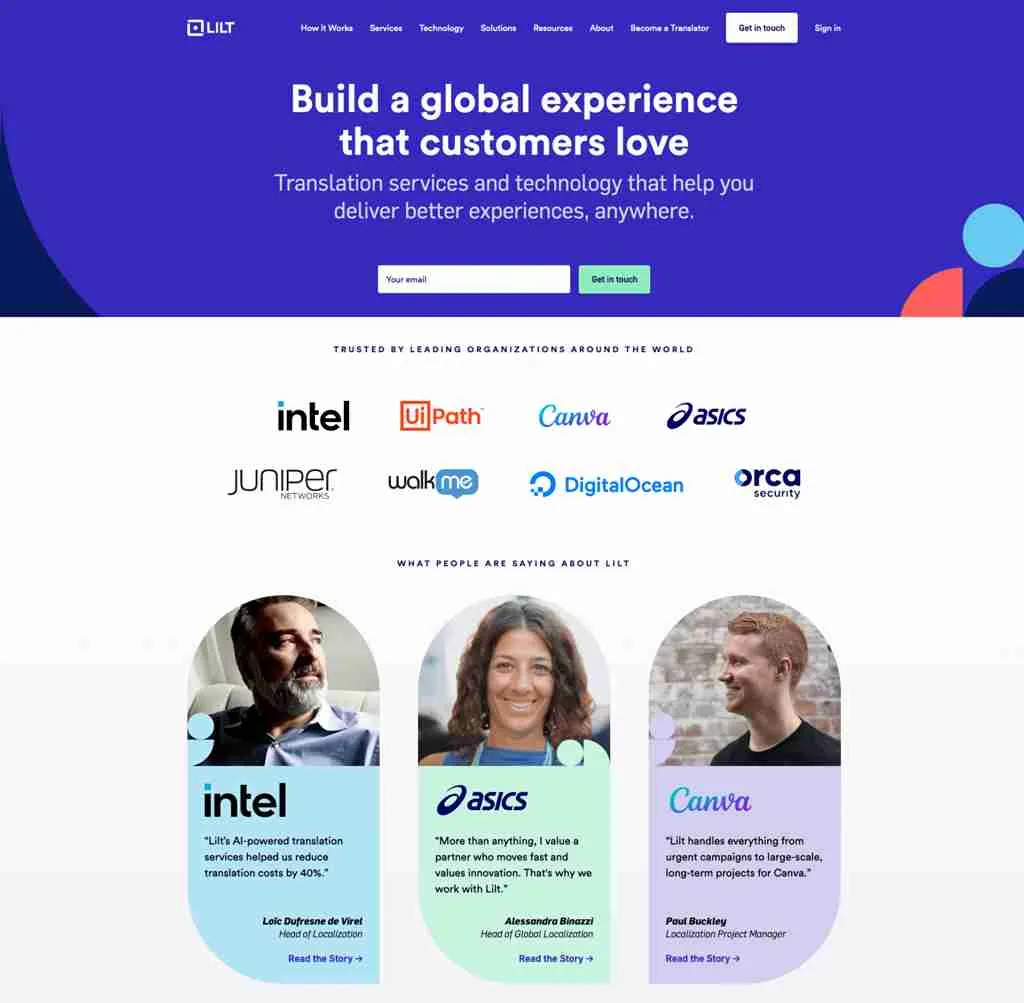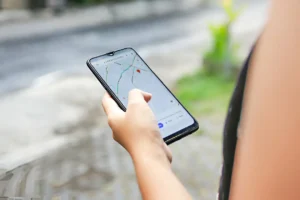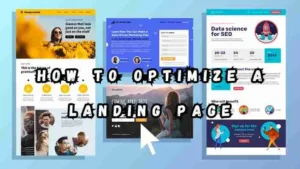
How to Optimize a Landing Page: Tips and Best Practices
Providing a memorable user experience and attracting more visitors are all possible with an optimized landing page. By providing visitors with an informative experience on your landing page, you will increase their likelihood of converting by creating engaging content and an informative design.
WHAT IS LANDING PAGE OPTIMIZATION?
When you optimize a landing page, you want to make it easier for people to act, such as buy a product or register. The goal is to make the page so appealing that people want to stay and follow your instructions. Add appealing pictures, place the buttons where they should be, and make it more user-friendly.
PRIMARY GOALS OF OPTIMIZING A LANDING PAGE
When optimizing your landing page, your three main goals should be to boost conversions, attract more visitors, and improve the user experience. The implementation of effective optimization techniques, the optimization of design and content, and the creation of a seamless user experience can significantly increase website traffic and conversions.
Attract more website visitors
Enhance your user experience to increase visibility and organic traffic. The better your user experience, the more users you will attract and keep.
Boost conversions
Make your user experience, design, and content better to improve conversion rates. When a user experience is done well, nobody notices it. If it’s done well, nobody notices it. Whenever users don’t feel confused about what to do next, you know a design is well crafted.
Enhance user experience
Having a seamless, enjoyable experience will make it easier for users to find information and take desired actions. We aim to find creative solutions that will improve the customer experience and help them find the information they need quickly – while increasing conversions – by identifying areas where customers may feel frustrated (or reasons why they don’t convert).
CREATIVE OPTIMIZATION ELEMENTS
A creative landing page optimization process involves testing and refining its design and content to increase conversions. We test headlines, forms, page layout, call-to-action (CTA) colors, copy, images, and CTAs to determine which combination of elements will result in the highest conversion rate.
Headlines:
In order to capture users’ attention, test different variations of headlines to see which one has the most impact and relevance.
Form styles:
Experiment with different form formats for better user experience and more form submissions.
Page layout:
Try out different layouts and arrange them to find the one that is most appealing and intuitive.
CTA color/layout:
Try out different colors and layouts for your call-to-action buttons to make sure they are clickable.
Images:
You need to test different images to determine what works best and supports your messaging.
Copy:
By experimenting with copywriting variations, you will find the most persuasive and compelling messages.
HOW TO OPTIMIZE A LANDING PAGE
Optimizing your landing page is important if you want to achieve the desired results.

1. IDENTIFY PROBLEMS
You can figure out which aspects are frustrating your users most by thoroughly analyzing your landing page for obvious problems or possible improvements.
You can identify any potential obstacles preventing users from converting by analyzing the factors that brought them to your landing page. What might frustrate or confuse them, for instance? Identifying these issues will help you resolve them.
2. KNOW YOUR AUDIENCE
The messaging, tone, and value propositions of your content should be aligned with the needs of your target audience in order to drive engagement and conversions.
Take these things into consideration when writing content.
Researching your audience:
By identifying your audience’s demographics, motivations, and pain points, create compelling content that addresses their challenges and provides appropriate solutions.
Personalizing your content:
Your content must focus on the benefits your service or product will provide to each group, based on the characteristics of your audience or buyer persona. Incorporate personalization techniques to improve the user experience.
Incorporating social proof:
If you’d like to establish credibility and trust on your landing page, feature customer reviews, testimonials, or other evidence of trust. Share success stories that are relevant to your target market and demonstrate your credibility.
3. USE VISUALS AND PERSUASIVE LANGUAGE FOR CTAS
By using persuasive language and compelling visuals on your website, you can encourage user action.
Several tips for CTAs are listed below:
Visual hierarchy and attention-grabbing elements:
In order for your landing page to be successfully designed, you need to place your CTA in the center and make sure the headline is easily visible. Ensure your CTA is clear using bold color, bold type, and relevant images.
Persuasive and actionable language:
To motivate users to take action, make sure your copy conveys the unique value proposition of your product or service. Make sure your copy conveys the benefits users will receive by taking the desired action. It is best to use action-oriented words and phrases to motivate them to click through the CTA.
4. IMPLEMENT A/B TESTING FOR COMPARISON
By comparing various designs and content elements on your landing page, A/B testing can determine which elements are most effective for improving conversions.
Follow these best practices for successful A/B testing.
Testing individual elements:
A series of tests can be conducted to identify the most effective headlines, buttons, images, or form layouts.
Establishing a control group:
In order to measure the effectiveness of new variations of your landing page, you should always compare them to your baseline version.
Setting clear goals and metrics:
Make sure that you establish specific metrics for each variation and measure statistical significance before running A/B tests. Establish clear goals before performing A/B tests, which include increasing conversion rates, converting forms, and increasing click-through rates.
5. CRAFT COMPELLING CONTENT AND HEADLINES
The following strategies can help you make headlines and content more appealing and more valuable so that you can capture users’ attention and convey your brand’s value.
Concise and impactful headlines:
Describe what your unique selling proposition is in an easy to understand way using power words, numbers, action-oriented language, and a sense of urgency in your headlines.
Clear and persuasive copy:
Make your content captivating by including bullet points, subheadings, and bold text.
Implementing social proof:

Using testimonials, reviews, and endorsements from satisfied customers helps you establish credibility and build trust in your offer. Confirm the value and validity of your offer with social proof.
6. MAKE YOUR NEW PAGE MOBILE FRIENDLY
Your landing page should be optimized for mobile devices if you want to ensure a seamless user experience. Here are a few ideas:
Responsive design:
A responsive design ensures that your landing page displays optimally across a variety of screens. Use CSS media queries to adjust font size, image dimensions, and layout accordingly.
Condensed navigation:
You could use a hamburger or collapsible menu to save space and improve accessibility if your navigation menu is required to fit on a mobile device.
Larger font sizes:
Your landing page’s font size must be increased to make your content easy to read on smaller screens, as well as improve the user experience. Aim for a minimum font size of 16px on your landing page to make the content easy to read.
Optimized images:
Lazy-loading images increase page load times by prioritizing content above the fold by reducing file sizes and improving loading times on mobile devices.
7. IMPROVE PAGE LOAD SPEED IN LANDING PAGE OPTIMIZATION
It is important to optimize your page load speed so your visitors have a better user experience and reduce bounce rates, which will improve your conversion rate. Here are some tips on how to make your pages load faster:
Image optimization:
Resize your landing page images to fit the dimensions required on your landing page, and use appropriate file formats for the best file storage efficiency. Use tools such as ImageOptim, TinyPNG, and Kraken.io to reduce the size of your landing page images.
Code minification:
By using online tools or task runners such as Gulp or Grunt, HTML, CSS, and JavaScript can be cleaned up of whitespace and unnecessary characters.
Caching:
Configure HTTP headers to require browsers to cache static resources using techniques like cache-control headers and server-side caching mechanisms.
Content Delivery Network (CDN):
The use of techniques such as setting cache-control headers and using server side caching mechanisms can be used to instruct browsers to cache static resources. When you use a CDN to distribute assets across multiple servers, you can reduce latency and increase page load speed by distributing content from servers located in different geographical regions.
8. STREAMLINE LAYOUT AND STRUCTURE FOR LANDING PAGE EFFECTIVENESS
By following these best practices, you can improve the engagement and effectiveness of your landing page.
In order to ensure that your landing page aligns with your marketing goals, break down the content and guide users through it with headings, subheadings, and bullet points.
Strategic use of white space:
By creating visual breathing space around elements, you can increase readability and keep sections clearly separated from one another.
Visual hierarchy:
Consider using techniques such as size, color, and position to draw viewers’ attention to key elements such as headlines, key messages, and calls-to-actions.
Intuitive navigation:
If you want to encourage users to take the next step, make sure the headline flows seamlessly into the CTA. Use intuitive navigation elements that point the user where to go.
9. USE ANALYTICS FOR PERFORMANCE TRACKING AND ADJUSTMENTS
Using data-driven analytics, you can analyze your landing page’s performance to a great extent. You should make sure that your landing pages are properly setup and are trackingable (whether using Google Analytics or another platform) if you want to understand their performance.
Implementing tracking tools:
You should use web analytics tools like Google Analytics to ensure that tracking codes are configured properly on your landing pages.
Analyzing user behavior:
Analyze your analytics data to learn how users interact with your landing page. Focus on conversion funnels and user flow to identify areas for improvement.
Making data-driven adjustments:
In order to ensure ongoing optimization, continually monitor and evaluate the impact of CTA placements, page load speed, and content elements. If you want to optimize your site continuously, adapt your CTA placements, page load speed, and content elements as needed.
OPTIMIZE YOUR CONTENT WITH Techqubix STRATEGIES
In order to remain ahead of your competitors and become the industry leader, you should work with Techqubix. We can help you optimize your landing pages. We have a number of examples of past work that you can check out to find out why a digital marketing agency could help you.


